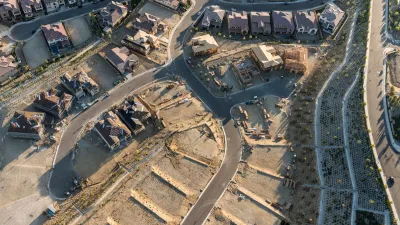In the "Room for Debate" section of The New York Times, five experts debate whether the federal government should continue to subsidize the cost of coastal reconstruction in the aftermath of storms.
"Should the federal government stop helping to rebuild properties in areas vulnerable to natural disasters? Would it make sense for the federal and local governments to buy such land, to prevent future loss of homes and lives?" These are among the questions considered by debaters from Taxpayers for Common Sense, the Joint Center for Political and Economic Studies, the Insurance Institute for Business & Home Safety, the University of California, Santa Barbara, and the Institute of Marine and Coastal Sciences at Rutgers University.
From Steve Ellis, the vice president of Taxpayers for Common Sense:
"Politicians miss the point when they grab a megaphone and cry out that we will rebuild. We need to rebuild smarter and better. Not just homes and businesses, but policies, programs and projects, ensuring we aren’t encouraging development in harm’s way....No one is suggesting we move the entire New Jersey seacoast. But we can buy out and encourage mitigation of the most vulnerable properties. Every dollar in mitigation saves four in recovery."
From Ralph B. Everett, president and chief executive of the Joint Center for Political and Economic Studies:
"But let us also remember that four-fifths of Americans live in counties where natural disasters have been declared in just the past six years. Last year, Hurricane Irene ravaged communities hundreds of miles from the coastline. Should we not rebuild in these communities, as well? Over the past two years, record numbers of tornados have hit in the South. Should we no longer rebuild after a twister hits?...We have to stay focused, above all else, on fundamentally transforming the way we use energy, with policies that spur the markets to promote large-scale energy efficiency and low-carbon, renewable sources of energy."
FULL STORY: Washed Away by Storms, Rebuilt by Taxpayers

Alabama: Trump Terminates Settlements for Black Communities Harmed By Raw Sewage
Trump deemed the landmark civil rights agreement “illegal DEI and environmental justice policy.”

Study: Maui’s Plan to Convert Vacation Rentals to Long-Term Housing Could Cause Nearly $1 Billion Economic Loss
The plan would reduce visitor accommodation by 25% resulting in 1,900 jobs lost.

Why Should We Subsidize Public Transportation?
Many public transit agencies face financial stress due to rising costs, declining fare revenue, and declining subsidies. Transit advocates must provide a strong business case for increasing public transit funding.

Paris Bike Boom Leads to Steep Drop in Air Pollution
The French city’s air quality has improved dramatically in the past 20 years, coinciding with a growth in cycling.

Why Housing Costs More to Build in California Than in Texas
Hard costs like labor and materials combined with ‘soft’ costs such as permitting make building in the San Francisco Bay Area almost three times as costly as in Texas cities.

San Diego County Sees a Rise in Urban Coyotes
San Diego County experiences a rise in urban coyotes, as sightings become prevalent throughout its urban neighbourhoods and surrounding areas.
Urban Design for Planners 1: Software Tools
This six-course series explores essential urban design concepts using open source software and equips planners with the tools they need to participate fully in the urban design process.
Planning for Universal Design
Learn the tools for implementing Universal Design in planning regulations.
Smith Gee Studio
Alamo Area Metropolitan Planning Organization
City of Santa Clarita
Institute for Housing and Urban Development Studies (IHS)
City of Grandview
Harvard GSD Executive Education
Toledo-Lucas County Plan Commissions
Salt Lake City
NYU Wagner Graduate School of Public Service





























